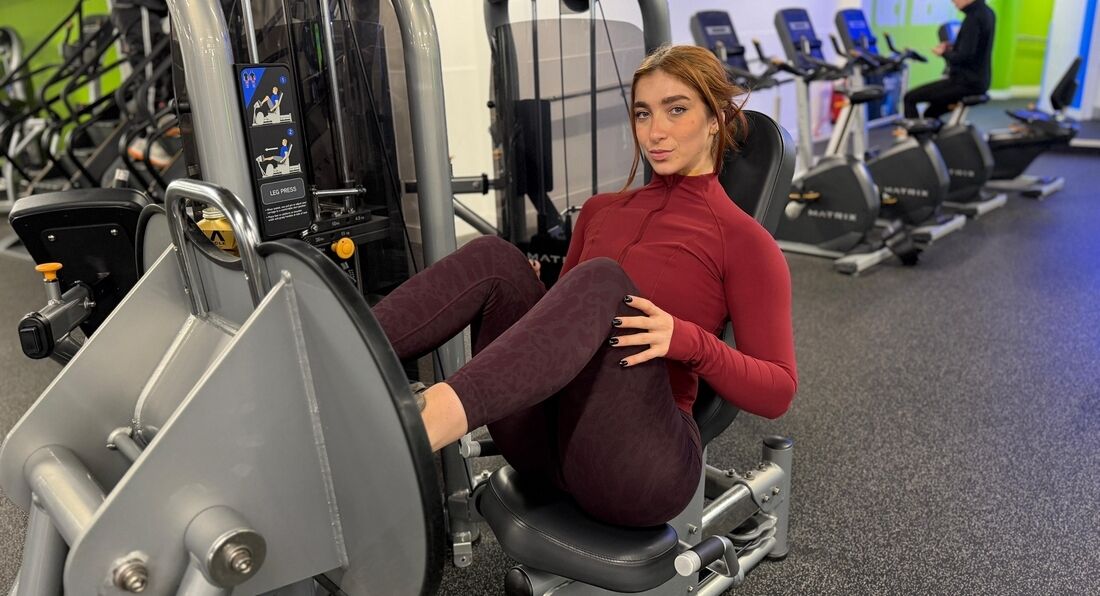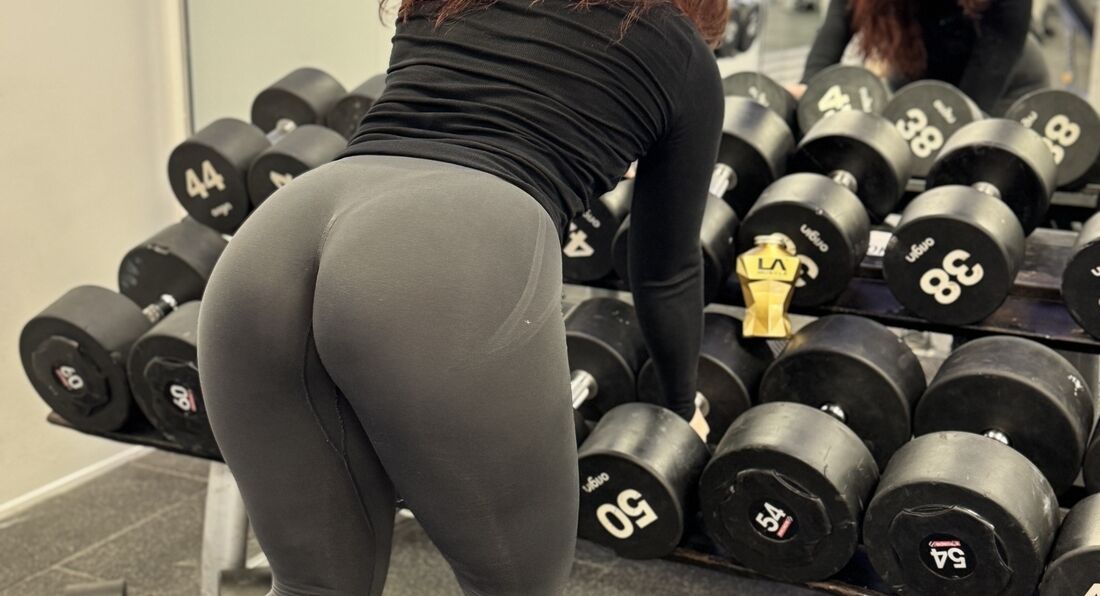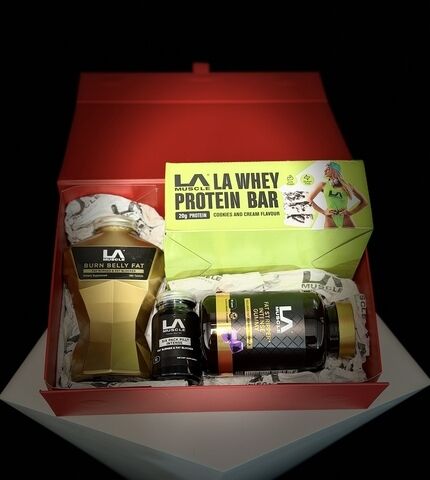The Knowledge > Better Health >
Sunday, 18th January 2009
PMS, Menopause, Fibroids, Thrush
Ladies, help yourself the natural way
By LA Muscle on 18.01.2009 11:23 am
Ladies First
By Behrooz - Dr Bod - Behbod MB ChB
Medical Doctor & Life Coach
Please consult your licensed physician / GP prior to taking any of the advice mentioned here.
Premenstrual Syndrome (PMS)

Considering the potential side-effects of the anti-depressant and anti-anxiety drugs increasingly prescribed for suppressing PMS-associated symptoms, it's extremely worthwhile to identify and treat the multi-factorial causes. They include excess oestrogen, progesterone deficiency, elevated prolactin levels, hypothyroidism, stress, adrenal dysfunction, depression and nutritional imbalances. PMS can easily be prevented and treated through cost-effective nutritional, exercise, lifestyle and behavioural approaches, which have the added anti-aging benefits of enhancing health and vitality, whilst preventing many degenerative diseases such as cancer, diabetes, osteoporosis, stroke and heart disease.
So what can you do?
1. Nutrition:
a. Increase intake of fibre-rich plant foods, such as fruit, vegetables, legumes, whole grains, nuts, and seeds;
b. Reduce or eliminate the amount of dairy and animal products - instead of fatty meats, eat fish, skinless poultry and lean cuts;
c. Eliminate sugar intake - watch out for hidden sugars, so read food labels carefully (avoid sucrose, glucose, maltose, lactose, fructose, corn syrup, and white grape juice concentrate);
d. Reduce environmental oestrogens - including toxic pesticides and herbicides sprayed on foods, which are stored in fat cells when ingested and mimic oestrogen in the body - there is a growing epidemic of oestrogen-related diseases, such as PMS, breast cancer, and low sperm counts in men;
e. Increase intake of soy foods - contain phytoestrogens, which have a balancing effect on oestrogen levels - when high, they bind to oestrogen receptors and exert a fraction of the effect of regular oestrogen - whereas when levels are low, as in menopausal women, they will cause an increase in the oestrogen effect;
f. Eliminate caffeine intake - found in tea (and green tea), coffee, carbonated drinks (e.g. Coke & Pepsi), energy drinks such as Red Bull, chocolate, and caffeine-containing "fat-burner" supplements;
h. Take a high-quality multi-vitamin and multi-mineral supplement every day, ensuring they provide adequate levels of vitamin B6 (50mg/day), magnesium (6mg per kilogram bodyweight per day), calcium (1000mg/day - preferable spaced out as 500mg taken twice daily), zinc (15mg/day), vitamin E (400IU / day and vitamin C (1000mg/day) ;
i. Take one tablespoon of flaxseed oil daily to provide adequate levels of the essential fatty acids;
j. Take a daily probiotic supplement, but watch out for the high sugar and dairy content of commercial products typically found in supermarkets;
k. Herbal remedies include Dong quai (Angelica sinensis), liquorice root (Glycyrrhiza glabra), black cohosh (Cimicifuga racemosa), and chasteberry (Vitex agnus-castus);
l. Enhance liver detoxification by taking lipotropic factors, such as choline, methionine, betan, folic acid, and vitamin B12. These factors increase the removal of fat and bile by the liver. A daily dose of 1000mg of choline and 500mg of methionine may be required to exhibit a lipotropic effect;
m. Milk thistle supplementation is also a great way of improving liver detoxification;
n. Drink 2 to 3 litres of clean, filtered water every day;
o. Stop smoking;
p. Consult a nutritionally-orientated doctor to identify food allergies that you must avoid.

3. Behaviour & Psychology - our 'modern' hectic lives can play havoc with our body's hormones and immune system, and so stress management and relaxation are crucial. It is important to learn how to effectively deal with stress, as most women with PMS tend to develop negative coping strategies such as overeating, overspending, smoking, alcohol, and drugs. By consulting a Life Coach or Cognitive Behavioural Psychotherapist, you can identify your negative coping strategies, and plan positive and health-promoting responses to stress.
Fibrocystic Breast Disease (FBD)
Benign cysts, also referred to as cystic mastitis, are usually a component of PMS, and as such the above preventive / therapeutic measures are highly effective. FBD is considered a risk factor for breast cancer. It is vital that all women practice regular monthly breast self-examinations. To learn how, or if you notice a lump or worrying symptom affecting your breasts, you must consult your licensed physician. Though the advice given above for PMS can also help prevent or reduce the risk of developing breast cancer, this issue will be dealt with in May's article on CANCER.
Vaginitis & 'Thrush'

The most common causes include infection with Candida albicans (thrush), Trichomonas vaginalis, or Gardnerella vaginalis, but vaginitis can also be caused by the organisms Neisseria gonorrhea, Herpes simplex, and Chlamydia trachomatis. It is advised that acute infections are treated with conventional antibiotics, but for more chronic, recurrent cases, it is worthwhile using an integrative medical approach, and better yet, preventing vaginitis in the first place! The goals are to identify and eliminate aggravating or causative factors, improve the vaginal and entire body's immune system, whilst establishing well-balanced 'friendly' bacterial flora.
So what can you do?
1. Nutrition:
a. Foods and drinks that aggravate the situation are best avoided during treatment of acute infections, and reduced for preventive measures. These include:
i. Sugar - anything sweet!
ii. Dairy products - milk, chocolate, cheese, yoghurt, ice cream, etc…
iii. Alcoholic beverages and other fermented products such as vinegar, pickles, and mayonnaise
iv. Dried fruits 
vi. Yeast & mushrooms
vii. All the foods you are allergic to;
b. Instead, eat whole fresh foods, especially vegetables;
c. Take a high quality multi-vitamin and multi-mineral supplement every day, ensuring it includes 1000mg vitamin C, 15mg zinc picolinate and 400IU vitamin E;
d. Drink 2 to 3 litres of clean, filtered water every day;
e. Take a daily probiotic supplement, but watch out for the high sugar and dairy content of commercial products typically found in supermarkets - take approximately one to two billion live Lactobacillus sp. organisms per day orally.
f. During infection,
i. Increase vitamin C dose to 1000mg three times per day (but do not take the last dose later than 4pm, as it may cause insomnia)
ii. Increase zinc picolinate to 30mg once per day
iii. Goldenseal tincture - 20-60 drops every 2 - 4 hours or 2 capsules three to four times per day
iv. Add one clove of garlic to food after your food has been cooked and prepared, taking one clove per day for a total of five days.
2. Topical Treatments that can be used during active infection:
Do not try all these at once. Start with one and add another or substitute if symptoms do not improve. Always seek the care and supervision of your licensed physician.
a. Garlic - place one clove of skinned garlic and rap it within a sterile gauze, inserting it into the vagina in the morning and remove it in the evening, repeating this with a fresh clove of garlic and gauze for five days. Alternatively this can be done overnight for six days. Ensure a sterile gauze is used, since garlic can irritate and burn the mucosal membranes within the vagina;
b. Tea tree oil used topically for symptomatic relief;
c. Boric acid, 600mg capsules inserted into the vagina once - twice daily for upto two weeks;
d. Probiotic Lactobacillus acidophilus douches - choose either a good quality supplement or a live, active-culture yoghurt. Dissolve enough in 10ml water to provide one billion organisms, then douche the solution into the vagina using a syringe - once daily for five days;
e. Gentian violet - swab externally one to two times daily if desired, though this can be messy and stain clothes, and sensitivity reactions are common.
3. Other Preventive Measures:

b. Wear cotton underwear;
c. Practice safe, hygienic sex;
d. During active infections, avoid sexual activity altogether - at the very least, use condoms;
e. Regular daily exercise (gentle aerobic, e.g. walking or swimming, since intensive training suppresses the immune system which must be rebalanced with healthy nutrition and anti-oxidant supplementation), yoga, relaxation, meditation, spirituality and effective stress management help strengthen the immune system.
Fibroids
Most women do not have symptoms and are unaware they have uterine fibroids until they are noted on a routine pelvic examination by their GP or gynaecologist. Symptoms depend on the type and location of the fibroid, and include heavy, prolonged, irregular and painful bleeding during the menstrual cycle, pelvic pressure and pain, a sense of fullness in the abdomen, rectum or lower back, urinary frequency, constipation, and even reproductive complications, premature labour, or placental abruption (the fibroid causing bleeding and detachment of the placenta).
The cause(s) of uterine fibroids is still unclear. Potential factors include:
" Genetic predisposition;
" Excessive unopposed oestrogen, or raised oestrogen: progesterone ratio:
o Early (ages 13 to 16) exposure to oral contraceptives - however, both pregnancy and oral contraceptive use have been associated with a lower risk of developing fibroids;
o Early onset of menstruation (menarche);
o Late onset of menopause;
o Symptoms are usually relieved at menopause, but continue in those taking hormone replacement therapy (HRT);
o High body mass index & obesity;
" High blood pressure;
" Pelvic inflammatory disease;
" Use of contraceptive intra-uterine coil devices that become infected;
" Use of talc around the vagina.
Conventional treatments include surgery and hormonal medications. Gene therapy may prove effective in the future.
So what can you do?
Though very little clinical research exists, preventive measures can include:
 1. All those mentioned for PMS since they will help balance oestrogen levels, enhance detoxification and digestion, and reduce body fat and high blood pressure;
1. All those mentioned for PMS since they will help balance oestrogen levels, enhance detoxification and digestion, and reduce body fat and high blood pressure;
2. In order to reduce the risk of pelvic inflammatory disease, follow the advice given for preventing vaginitis and thrush;
3. Avoid prolonged use of talc powder around the vagina and perineum;
4. An interesting behavioural or mind-body-spirit approach that is used by many physicians is to encourage women to work with the meaning of the fibroid in their lives and consider the possible stagnation of energy 'stuck' in the uterus. In the book The Wisdom of Menopause: Creating Physical and Emotional Health and Healing during the Change, the author (Northrup) suggests that fibroids be considered a symptom a woman sends to herself in an unconscious effort to signal an emotional blockage. Fibroids emerge in an energetic pattern of stagnation of energy. A recent pilot study incorporated the use of visualisation, imagery, meditation, self-hypnosis, yoga and relaxation techniques, together with other nutritional and complementary approaches to show reduction or stabilisation of growth of fibroids. It is worthwhile learning these techniques and other ways of effectively managing stress in order to help prevent not only fibroids, but also a wide variety of chronic, degenerative diseases.
Menopause
Also known as the climacteric, this is the time in a woman's life when the ovaries cease to produce an egg cell, menstruation stops and the woman is no longer able to bear children. Menopause is said to have occurred when there have been no menstrual bleeds for twelve consecutive months, and can occur at any age, typically between the thirties and fifties. Although the menopause is unpreventable, and is indeed a natural progression in the woman's life, there are many associated symptoms and conditions which can be avoided.

Symptoms can include hot flushes, headaches, vaginal dryness and thinning (leading to painful intercourse), frequent urinary tract infections, cold hands and feet, forgetfulness, and an inability to concentrate. There is also an increased risk of developing certain diseases, such as osteoporosis, diabetes, cancer and heart disease. The conventional approach tends to involve hormone replacement therapy (HRT), which has provided great but temporary relief. HRT does have side effects and poses an increased risk of developing gallstones, blood clots (e.g. causing heart attacks, strokes), and cancer (e.g. endometrial and breast). Whether you choose to take HRT or not, and until the day medications become more selective with reduced side effects and risks, it is more constructive considering healthy measures that relieve menopausal symptoms, improve and enhance vitality, whilst also reducing the risk of developing chronic and debilitating diseases. Follow the advice and suggestions given for PMS above, whilst increasing the amount of phytoestrogens in the diet by consuming more soy foods, fennel, celery, parsley, flaxseed oil, nuts and seeds. These simple and economic nutritional, behavioural, exercise and lifestyle approaches should not be started when you reach menopause, but TODAY!
In Summary






























